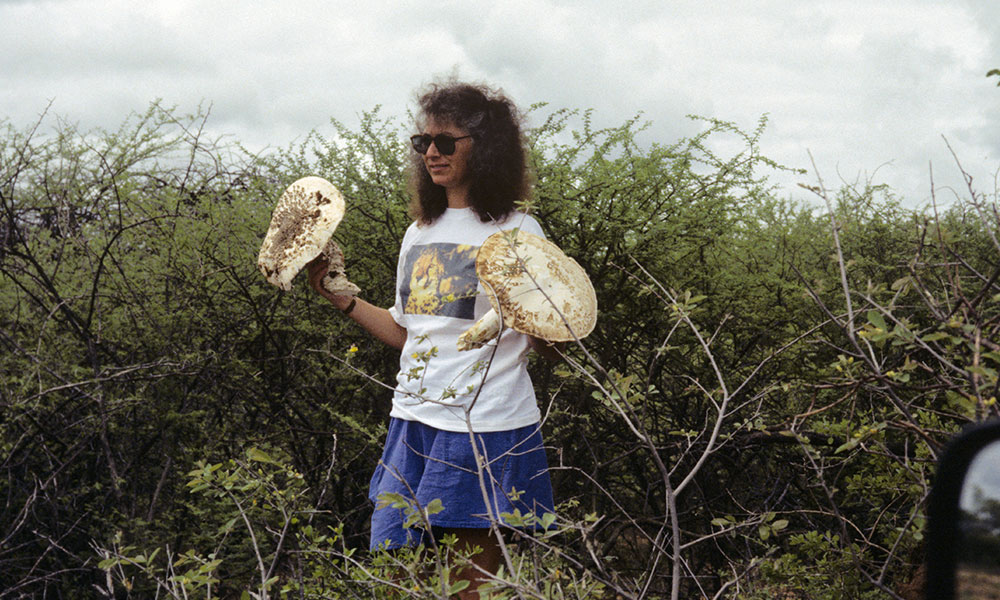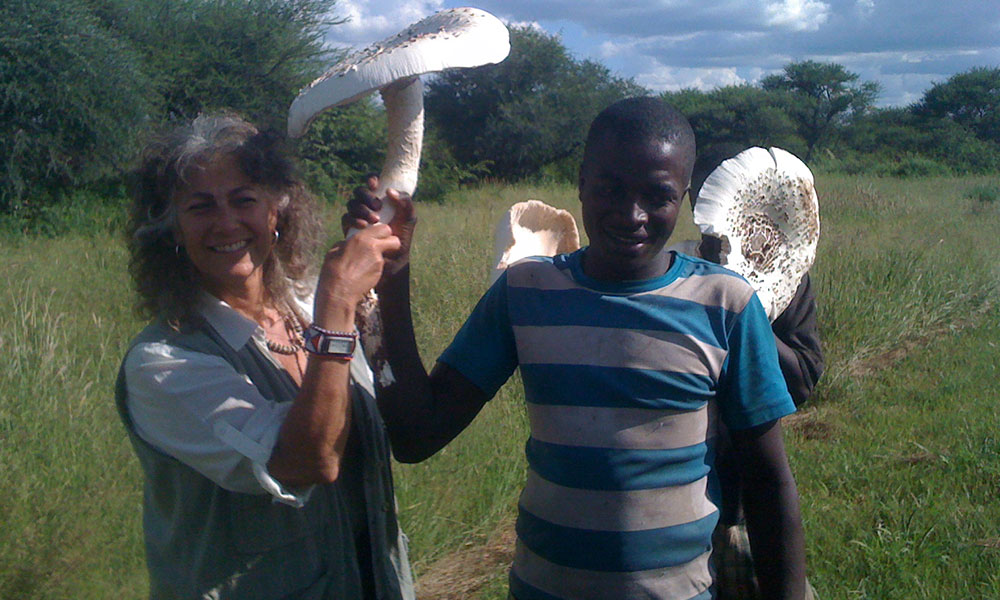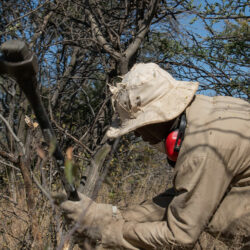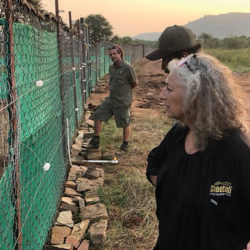Termites, Mushrooms and Cheetahs
-

- by Dr. Laurie Marker February 2, 2021

Termite Awareness Week is coming soon. The National Pest Management Association (NPMA) uses this opportunity (this year it’s March 7 – March 13) to educate people in the U.S. about termite prevention. Namibia may be known as “The Cheetah Capital of the World,” but we also have our share of termites, too. Like their American counterparts, termites here can be destructive to human structures and strip farmlands of life-supporting vegetation.
So what does this have to do with cheetah conservation?
From the African farmer’s perspective, cheetahs and termites have much in common. Historically both have been perceived as worthless vermin, pests that threaten human livelihoods. Species perceived to interfere with human livelihoods often become targets for mass eradication. During the 1970s and 1980s approximately 10,000 cheetah were removed from Namibia by farmers for posing predation threats to livestock. And for many years now, African farmers have been trying to rid the landscape of termites, because they perceive them to compete with cattle over grassland grazing.


Early research I conducted in the 1980s and 90s revealed cheetahs most often were not the true culprits in livestock predation cases. But because cheetahs hunt by day and live on farmlands, they were bearing an unjust amount of blame, simply because they were more visible to humans. With termites, newer research indicates the tall dirt mounds termites build may sustain significantly more tree, shrub, insect and animal life than the land surrounding the mound. So rather than threaten, the presence of termites and termite mounds can actually help farmers. Like earthworms, termites burrow through soil and grass to aerate the soil, allowing more water to seep into the ground. Termite droppings, combined with the aeration, create fertile soil with higher nitrogen and phosphorous content. This process results in tall grass and other vegetation proliferating around the mounds, feeding livestock and other grazers, like the zebra, cape buffalo and people. Wait — people?


A little known fact outside of Namibia, termites produce a delectable, edible mushroom species, Termitomyces schimperi. This mushroom is found only in Namibia and other northern regions of southern Africa. They are also known as Ejova or Omajowa in Herero, and as Termitenpilz in German. These mushrooms grow to be enormous, up to 1kg, and while humans can cultivate them they are never as successful at growing them as termites. As soon as the rainy season begins, these delicious fungi emerge (November through March). Namibians, including me, love these mushrooms! We forage for them to use in meals or to sell at roadside stands. The mushrooms can replace meat in many recipes, and we relish including them with staff meals at our CCF commissary.
Omajowa mushrooms are part of Namibian culture, are highly prized, and are seen as a symbol of prosperity. Ever since my arrival in Namibia in 1990 I have participated in mushroom hunts every rainy season. It is one of the highlights of the year. We cook the mushrooms and share them at meals and they are delicious when fried in butter until golden brown. Mmmm… crispy on the outside and seasoned simply with salt!
We have fantastic cooks here at CCF who make magic with Namibian agricultural products, including the goat milk, honey and wine we produce on our model farm. Our cooks have begun to publish CCF recipes on our Pinterest page @CCFCheetah, so you can prepare and share some authentic Namibian meals and share them with friends and family, too.

For more than 25 years, CCF has been working side by side with rural farming communities to address human-wildlife conflict in Namibia. Our programs not only help farmers control predation by offering practical tools, but educate them on “cheetah economics” and the role of the species in maintaining a healthy, farmland-bushveld ecosystem. Like cheetahs, termites also play an important role in maintaining ecosystem biodiversity.
Help us celebrate Termite Awareness Week by taking a moment to think of termites a little bit differently. Cheetahs are known as the best hunters on the savanna, as their kills feed many other species besides their own. With their tower-like raised garden beds termites too provide an important food source that benefits us all. Maybe someday termites can be known as some of the best farmers on the savanna?
Related Reading
-
January 20, 2025
Remembering Abdirizak -
April 3, 2023
Clearing the Land for Cheetahs -
October 4, 2022
Veterinary Work at CCF Needs Your Support




